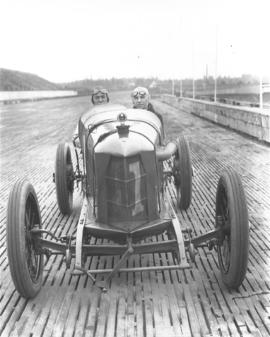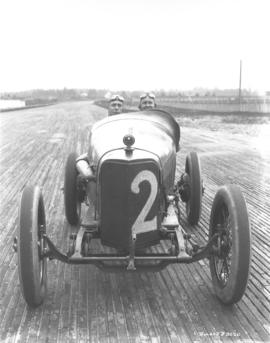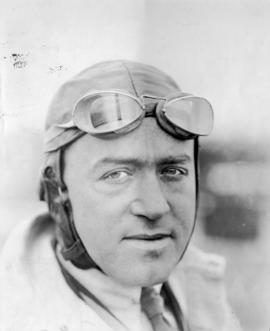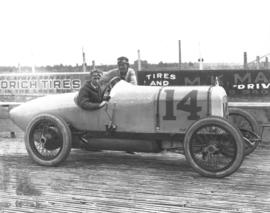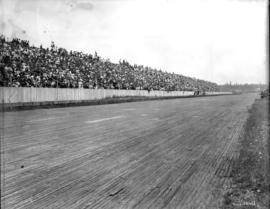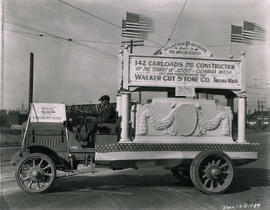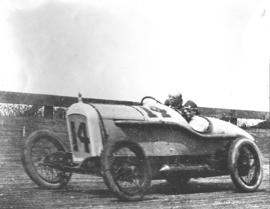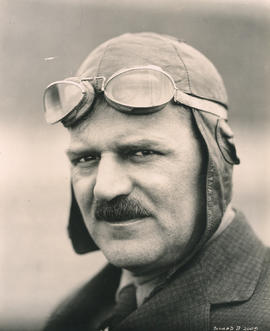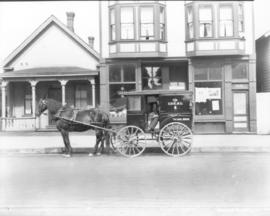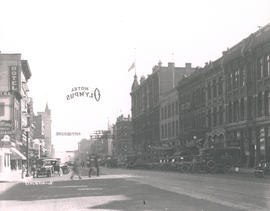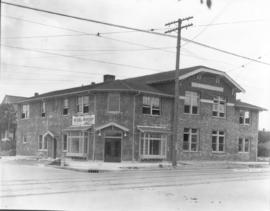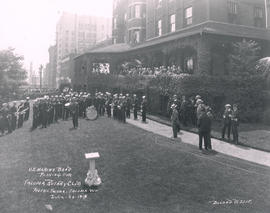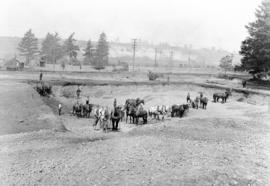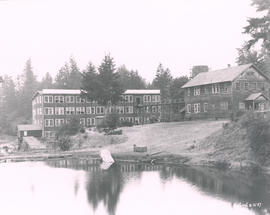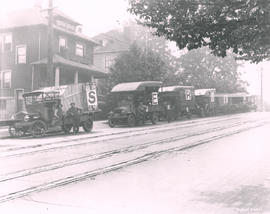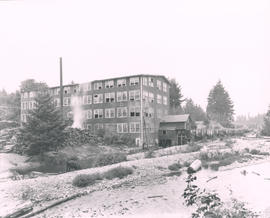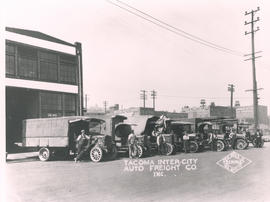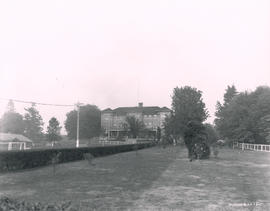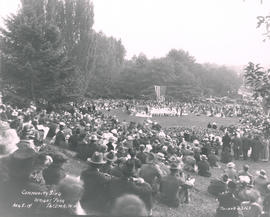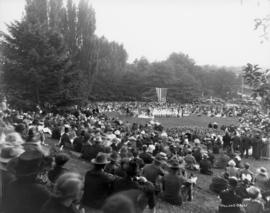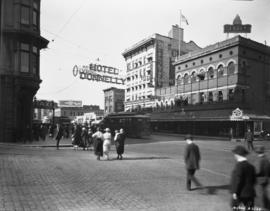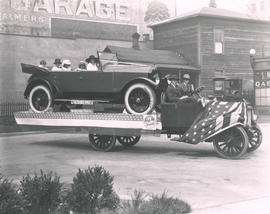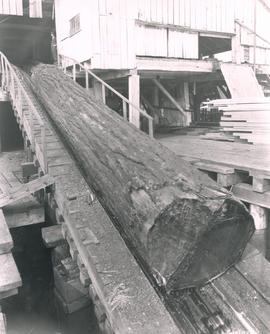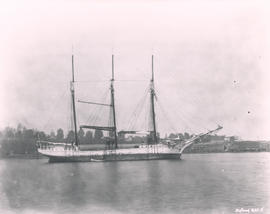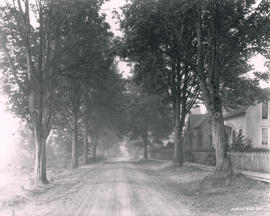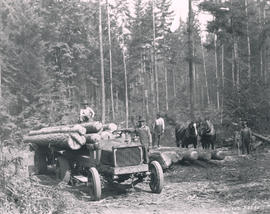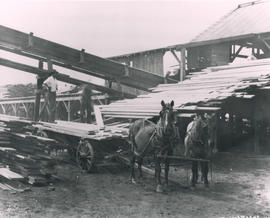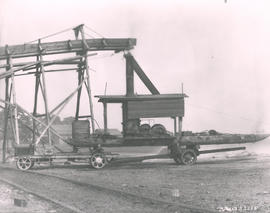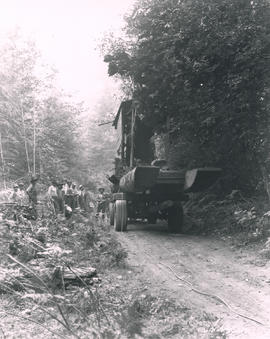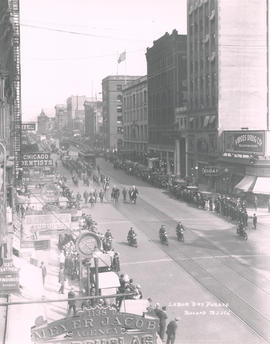- Item
- 1919-07
Part of Marvin Boland Photographs
1916 Indy 500 champion Dario Resta made his first appearance at the Tacoma Speedway in July of 1919, at the special 5-star 4th of July races. He joined fellow speed kings Louis Chevrolet, Cliff Durant, Ralph Mulford and Eddie Hearne in a one-day, three-race competition. Mr. Resta, already a star on the European tracks and winner on American speedways, brought his Resta "Mystery" Special to town. Although the car was dubbed a "Mystery" Special, it may have had some Frontenac in it. Mr. Resta was able to finish both first and second races but was forced out in the third and longest race of 80 miles with mechanical trouble. His car had qualified last of the five entered in the races with an average speed of 98.09 mph. At that time Mr. Resta indicated that he wasn't out to break any records in practice but was saving his car for the actual races. The Special's motor troubles and bad steering made it a non-factor in the competition. Dario Resta, who was brought up in England but was of Italian descent, would die in England five years later at the wheel of a Sunbeam while trying for a new land speed record. (TNT 7-2-19, p. 19-article; TNT 7-5-19, p. 1, 13-results) TPL-081; G51.1-110
Resta, Dario; Tacoma Speedway (Lakewood); Racetracks--Lakewood--1910-1920; Automobile racing--Lakewood--1910-1920; Racing automobiles--1910-1920; Automobile racing drivers;
